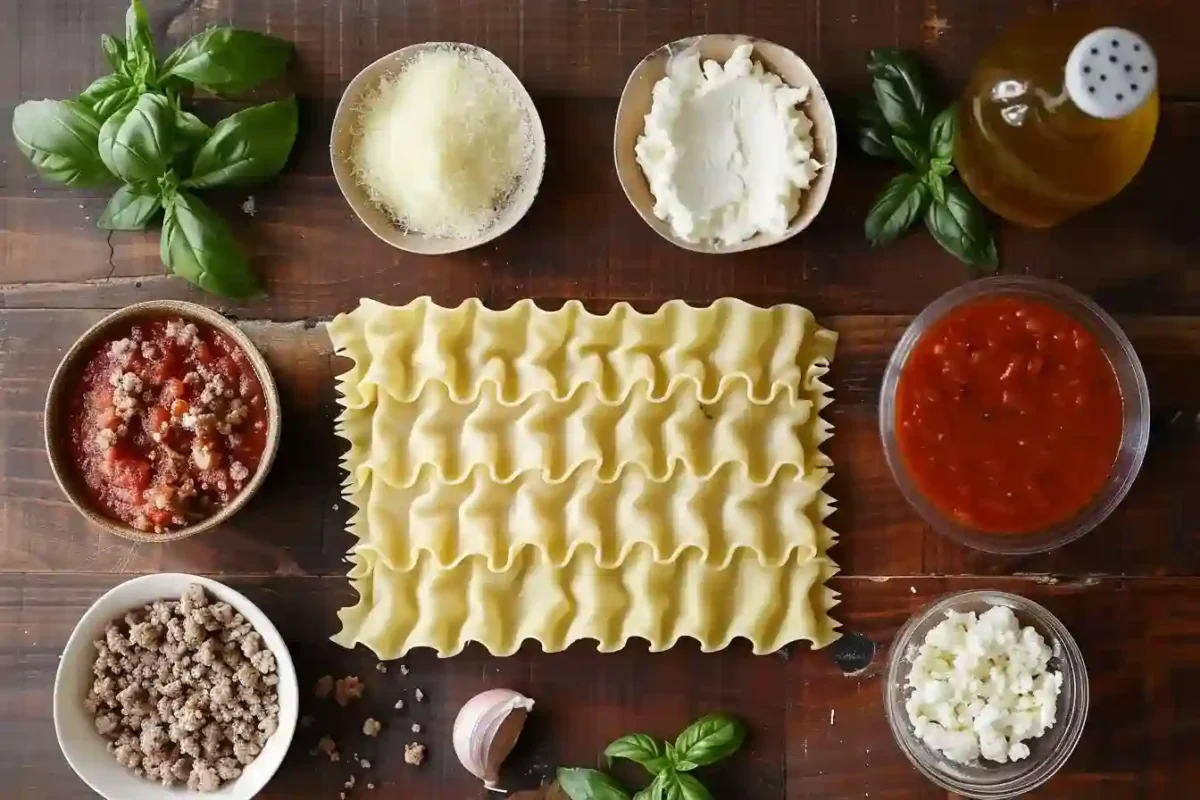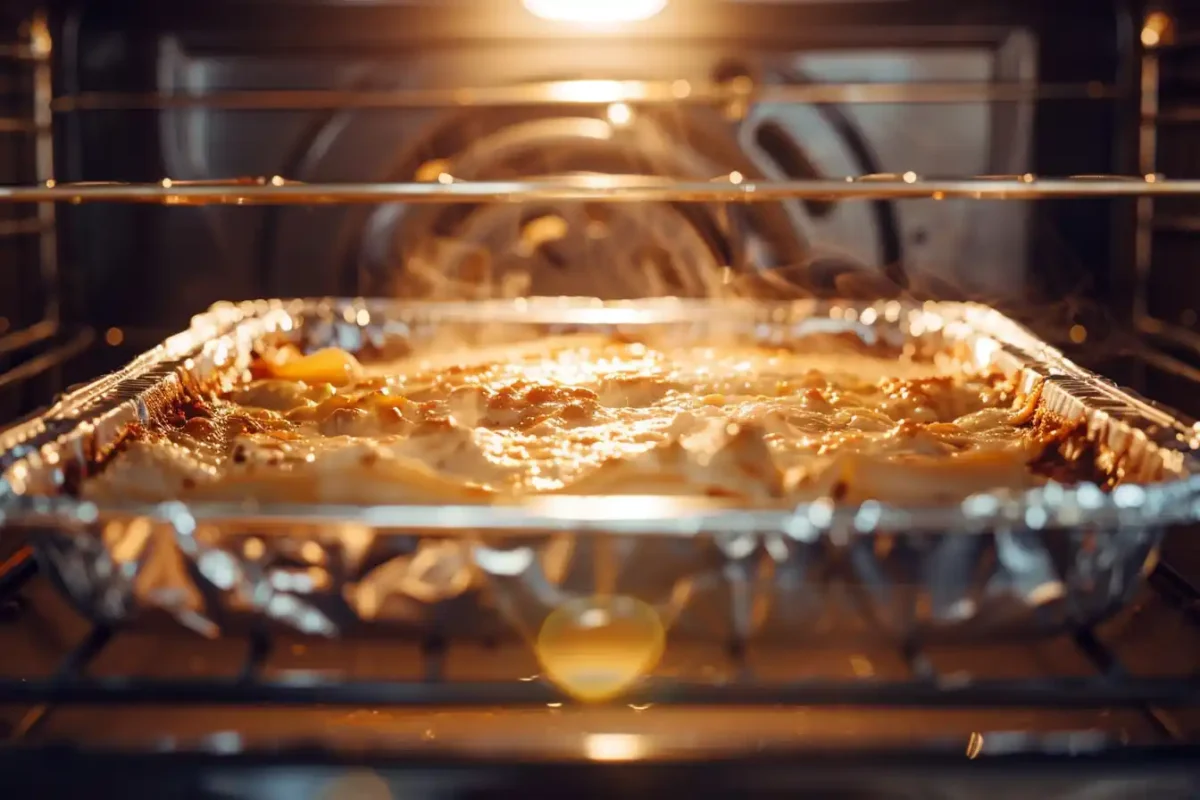When you’re craving a hearty, homemade lasagna but short on time, the question pops up do no-boil lasagna noodles really work? Spoiler alert: they absolutely can, and maybe even better than you think. In this guide, we’ll break down the pros, cons, and the magic behind these time-saving sheets. From bubbling layers of cheese to sauce that clings just right, we’re diving deep into whether no-boil lasagna noodles really work for a satisfying meal every time.
Why You’ll Love this Recipe
Whether you’re a weeknight warrior or weekend meal prepper, no-boil lasagna really work to save you time, effort, and kitchen mess. No giant pots of boiling water. No sticking sheets. Just layer, bake, and enjoy. The best part? With the right technique, they yield lasagna that’s just as rich and delicious as traditional noodles. You can even skip boiling with confidence thanks to this Barilla no-boil lasagna recipe and tips.
Pure Comfort
Lasagna is the definition of comfort food. Layer after layer of cheesy, meaty, saucy goodness all held together by noodles. So when you find out that no-boil lasagna really work, it makes indulging in this dish even easier. You still get that familiar forkful of love just without the prep drama. If you want to take your technique further, here’s a great guide on how to layer lasagna like a pro.
Ingredients for no-boil lasagna noodles

1 box of no-boil lasagna noodles
2 cups ricotta cheese
2 cups shredded mozzarella cheese
1/2 cup grated parmesan cheese
1 egg
1 lb ground beef or Italian sausage
1 small onion, chopped
2 cloves garlic, minced
3 cups marinara or pasta sauce
1 tsp dried oregano
1 tsp dried basil
Salt and pepper to taste
Fresh parsley for garnish (optional)
What You Need
You won’t need a pot for boiling! Just gather:
A 9×13 baking dish
Mixing bowls
Skillet for meat
Foil
Spatula
Your oven and a good appetite
Time to Cook no-boil lasagna noodles
Prep Time: 15 minutes
Cook Time: 50 minutes
Total Time: 1 hour 5 minutes
Steps to Make no-boil lasagna noodles
Preheat your oven to 375°F (190°C).
In a skillet, cook the beef or sausage with onion and garlic until browned. Drain excess fat.
Stir in the pasta sauce, basil, and oregano. Simmer for 10 minutes.
In a bowl, mix ricotta, egg, half the parmesan, and a bit of salt and pepper.
Spoon a bit of meat sauce into the bottom of the baking dish.
Layer in this order: no-boil noodles, ricotta mixture, meat sauce, mozzarella. Repeat layers.
Top with remaining sauce, mozzarella, and parmesan.
Cover tightly with foil (to trap steam for cooking the noodles).
Bake for 40 minutes, then uncover and bake an additional 10 for bubbly golden cheese.
Let rest for 10 minutes before slicing.
Make no-boil lasagna noodles Perfect
To ensure no-boil lasagna really work, here are pro tips:
Add a little extra sauce between layers steam and moisture are key.
Cover the dish tightly with foil to trap heat and soften the noodles.
Let the lasagna rest before serving so the layers hold. If you’re not sure when boiling is necessary, this article explains do you need to boil Barilla lasagna noodles or not.
Mix no-boil lasagna noodles Up
The beauty of this dish? Endless variations!
Use spinach and mushrooms for a vegetarian twist.
Try Boursin cheese pasta sauce in the ricotta mix for a creamy edge.
Substitute ground turkey or plant-based crumbles for a lighter version.
Perfect Partners
Serve alongside:
Garlic bread
Caesar salad
Roasted vegetables
Or keep it Southern with a comforting bowl of Swamp Soup
Busy Day Hero
Do no-boil lasagna really work for a quick meal? Yes! No fuss with boiling or draining. Just layer and go perfect for hectic weeknights or lazy Sundays.
Work Ahead
You can assemble the whole dish a day in advance. Keep it in the fridge covered tightly, then bake it when you’re ready. You’ll find the noodles soften beautifully as they rest in the sauce overnight.
Save Some For Later
Lasagna loves leftovers! Store slices in an airtight container in the fridge for up to 4 days. Or freeze individual portions for a grab-and-go lunch that microwaves like a dream.
Everyone’s Happy
From picky kids to indulgent adults, no-boil lasagna noodles really work to make everyone smile. You get the same delicious result without the hassle win-win!
Good For You Too
Skip frying and unnecessary fats. This dish is high in protein, has a healthy balance of carbs, and you can always sneak in chopped spinach or shredded zucchini between layers for a veggie boost.
Easy Clean Up
Fewer pots = fewer dishes. Since you’re skipping the boiling step, it’s just one pan to wash post-dinner (okay, maybe two with the skillet). Definitely a dinner worth the cleanup!
Switch no-boil lasagna noodles Up
Change the vibe with these creative variations:
Use white sauce instead of red for a chicken Alfredo lasagna.
Add pesto to each layer for a herbaceous punch.
Swap in tortillas for a Tex-Mex lasagna twist using this taco lasagna with uncooked ground beef.
Simply Perfect

With a little know-how and a lot of flavor, no-boil lasagna noodles really work every time. They’re a pantry hero that delivers cozy, cheesy satisfaction without the usual mess.
FAQs for no-boil lasagna noodles
- Do no-boil lasagna noodles really work without pre-cooking?
Yes! As long as your dish has enough moisture and you cover it while baking, they soften beautifully. - Can I use no-boil noodles in any lasagna recipe?
Absolutely just ensure your sauce is slightly more fluid to help the noodles hydrate. - Do I need to soak no-boil noodles first?
No soaking needed. Just layer them in dry and let the sauce work its magic. - Are no-boil noodles the same as oven-ready noodles?
Yes, they are the same thing just different names depending on the brand. - What brands are best for no-boil lasagna noodles?
Barilla is a favorite. For more tips and recipe ideas, check out the Ultimate Guide to Barilla No-Boil Lasagna. - How do I prevent dry edges on no-boil noodles?
Make sure the noodles are fully covered in sauce and cheese, especially at the edges. Covering with foil during baking helps too.
Conclusion for no-boil lasagna noodles
So, do no-boil lasagna noodles really work? The answer is a resounding yes. With the right layering method and enough moisture, they bake up tender and delicious every time. Whether you’re making classic lasagna, a vegetarian version, or a Tex-Mex twist, these convenient noodles save time without skimping on comfort or flavor. Don’t forget to check out how to layer lasagna like a pro for the best results.
Happy cooking with Rita chef ❤️!
Print
Do No-Boil Lasagna Noodles Really Work?
- Total Time: 1 hour 5 minutes
- Yield: 8 servings 1x
Description
Discover how no-boil lasagna noodles really work in this easy and delicious recipe featuring ricotta, mozzarella, ground beef, marinara, and herbs.
Ingredients
1 box no-boil lasagna noodles
2 cups ricotta cheese
2 cups shredded mozzarella cheese
1/2 cup grated parmesan cheese
1 egg
1 lb ground beef or Italian sausage
1 small onion, chopped
2 cloves garlic, minced
3 cups marinara or pasta sauce
1 tsp dried oregano
1 tsp dried basil
Salt and pepper to taste
Fresh parsley for garnish (optional)
Instructions
Preheat oven to 375°F (190°C).
In a skillet over medium heat, cook ground beef or sausage with onion and garlic until browned. Drain excess fat.
Add marinara sauce, oregano, and basil to the skillet. Simmer for 10 minutes.
In a bowl, mix ricotta cheese, egg, half of the parmesan, salt, and pepper.
Spread a layer of meat sauce in the bottom of a 9×13 baking dish.
Add a layer of no-boil noodles, followed by the ricotta mixture, meat sauce, and mozzarella. Repeat layers.
Top with remaining sauce, mozzarella, and the rest of the parmesan.
Cover dish tightly with foil and bake for 40 minutes.
Remove foil and bake for an additional 10 minutes until cheese is golden and bubbly.
Let lasagna rest for 10 minutes before slicing.
Notes
Make sure the noodles are fully covered with sauce to ensure they soften properly.
Use a slightly thinner sauce if yours is thick this helps hydrate the noodles while baking.
Lasagna can be made up to one day in advance and refrigerated before baking.
- Prep Time: 15 minutes
- Cook Time: 50 minutes
- Category: Dinner
- Method: Baking
- Cuisine: Italian-American
Nutrition
- Serving Size: 1 slice
- Calories: 435
- Sugar: 6g
- Sodium: 720mg
- Fat: 24g
- Saturated Fat: 11g
- Unsaturated Fat: 11g
- Trans Fat: 0g
- Carbohydrates: 28g
- Fiber: 3g
- Protein: 29g
- Cholesterol: 85mg

